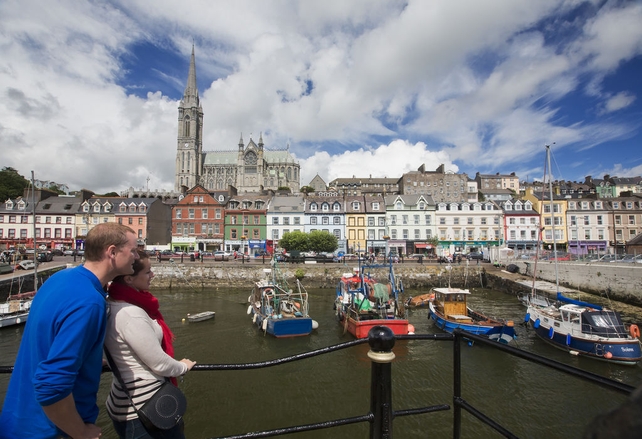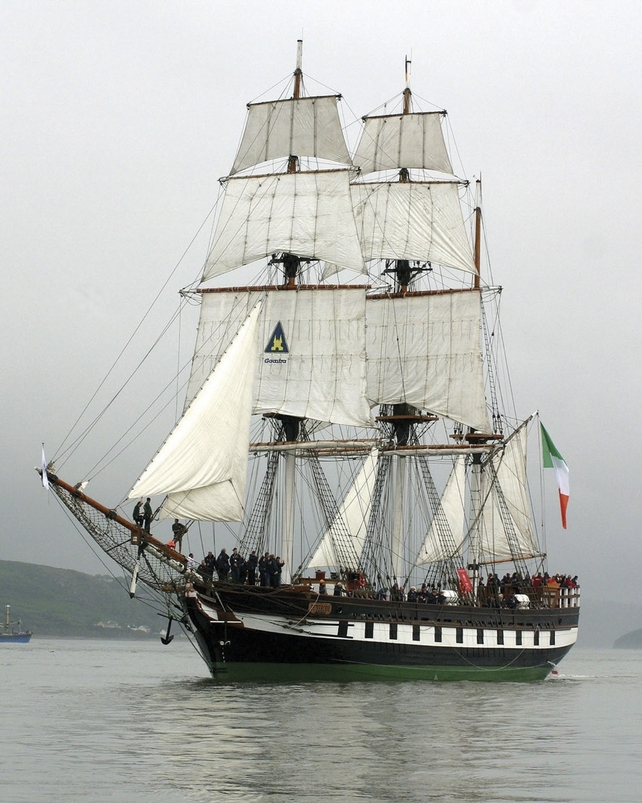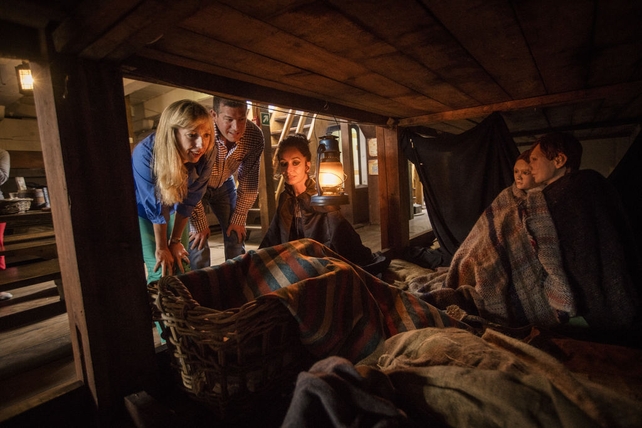Ireland’s Ancient East is brimming with spellbinding nautical stories. With hundreds of miles of beautiful coastlines, many of the tales are wrapped up with the sea, so I set out to explore Ireland’s Maritime Gateway and unearth compelling stories of the area.
What better place to start exploring the area’s seafaring history, than Cobh - the last port of call for the doomed Titanic. The pretty town’s history is inextricably linked to the passenger liner - which sank on 15 April 1912 after colliding with an iceberg during her maiden voyage to New York.
Of the 123 passengers who boarded in Cobh - or Queenstown as it was then called - 79 perished in the cold waters of the North Atlantic.
Titanic fanatic Michael Martin runs the Titanic Trail walking tour and is full of haunting tales of bravery and tragedy. He proudly showed me a photograph of him with Millvina Dean - the youngest survivor from the ship, who was saved by being passed onto a life raft tucked inside a laundry bag aged just nine weeks old.
 Being a waterside town, there is some delicious seafood to be found, and some of the best is in the Titanic Bar and Grill. And there’s the added bonus of its historic location - housed in the ticketing office of the White Star company, and overlooking the pier the passengers left to board the ship.
Being a waterside town, there is some delicious seafood to be found, and some of the best is in the Titanic Bar and Grill. And there’s the added bonus of its historic location - housed in the ticketing office of the White Star company, and overlooking the pier the passengers left to board the ship.
Ireland’s Ancient East not only transports you through time with ancient heritage and architect but the stories and tales bring you into that world of scholars, saints and sinners. This world is brought to life in my next destination; breath-taking Ardmore - believed to be the oldest Christian site in Ireland.
The beautiful ruins of Ardmore Cathedral nestle alongside the 12th Century Round Tower on the stunning Waterford cliffs. Here I meet local history buff Liam Suipeal, who delights me with stories about St Declan, who founded the settlement in the 5th century. While there are many theories on the purpose of the 30 metre round tower the natural focal point, Liam’s favourite is simple – that it was used as a beacon to guide pilgrims to the site, which was heavily forested at the time. It’s just incredible to think that this structure is still intact for us to appreciate today.
Nearby, St Declan’s Well was a place of reflection for the holy man - and is still a site of religious devotion today. Each year on Pattern Day - the 24th July - pilgrims drink water from the stone well and pray with the appropriately named local nun Sister Declan.
The Well and the ruins of St Declan’s church ruin mark the start of the spectacular cliff walk, a must for any visitor.
If you think of New Ross in County Wexford, you’ll probably think of the connection to JFK – his great-grandfather Joseph Kennedy emigrated to America from there. But the town was also a gateway for thousands of other Irish people who left in search of a better life.

The town is home to a replica of the Dunbrody - a ship designed as a cargo vessel and launched in Quebec in 1845, the very year that famine struck Ireland. Ships such as the Dunbrody were refitted to take thousands of emigrants to North America, sometimes carrying over 300 passengers at a time.
Local man Sean Connick runs the Dunbrody Famine Ship Experience. He calls the Dunbrody ‘the Ryanair of the 19th century’ and brings the period to life with his description of conditions on board these so-called ‘Coffin Ships’. A guided tour and costumed performers reveal the harsh realities of life below deck. Packed together in tiny bunks, the steerage passengers were allowed up on deck for just an hour each day, before being taken back to the dark, squalid hold.

Travelling along the stunning Hook Peninsula you’ll find another piece of wonderful maritime history, the world’s oldest operational lighthouse.
Hook Head Lighthouse devotee Ann Waters tells me that it has shone a protective beam for passing sailors for 800 years and remarkably, the original structure is still intact. Starting as a volunteer just a few years ago, Ann is now the manager of the fascinating Hook Lighthouse and Heritage Centre. She says that once she got involved, there was no getting rid of her, and her passion for the iconic landmark is evident as she recounts its stories.
Local legend has it that the first beacon on the site was lit by a 5th century Welsh monk called Dubhan, who established a monastery nearby. Life-size holograms of St Dubhan and Ann’s hero William Marshal almost literally bring the stories to life inside the lighthouse’s ancient walls. Marshal was the first Earl of Pembroke, who built the tower and married the daughter of legendary warrior Strongbow.
No maritime adventure in Ireland’s Ancient East would be complete without a trip in the sea itself, so I take a short hop up the road to the picturesque Slade Harbour. There I meet Martin Colfer, skipper of the catamaran ‘Rebecca C’ which during winter takes lucky tourists on whale watching trips around the Hook Peninsula. There are sadly no whales about when I visit, but the view of the rugged coast is more than worth a trip on the Celtic Sea. Not least because I discover from Martin that it was here where Cromwell first uttered the phrase ‘by Hook or by Crook’ when he vowed to take Waterford, the port town flanked by Hook Head and Crook Head.
Once back on dry land, my trip around the Maritime Gateway of Ireland’s Ancient East has come to an end for now. Surprise yourself and unearth some of Ireland’s most intriguing stories with a visit to Ireland’s Ancient East this summer. The memories of the stories and of the people I have met along the way with stay with me for years to come. Begin your journey at www.irelandsancienteast.com.
Did you like the article? Complete this SURVEY as we would love to hear your thoughts on Ireland's Ancient East.


